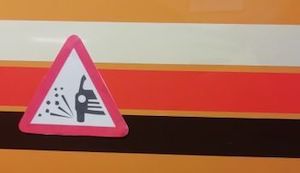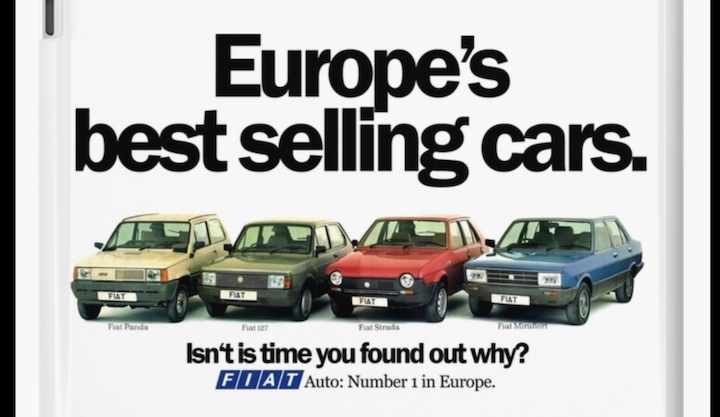Now as anyone who has read my reviews printed in The Gay UK will know, I have a soft spot for Fiat and I look at their products favourably because I like an underdog. I like someone who has tried even if their effort just isn’t the best but better than a “see me” at the end of a school report. I’m also a tad honest about their cars in some places. Take the current Tipo. I like the Tipo. It looks nice and drives OK for a cheap family hatchback. Problem is, it’s just too expensive for what it is before you get dealer discounts. It was marketed as something it clearly wasn’t. I reviewed it in 2016. 4 stars I said. By 2019 it had fallen from grace. I understand the times move on and cars progress, however the price increased and the quality of the Tipo didn’t.
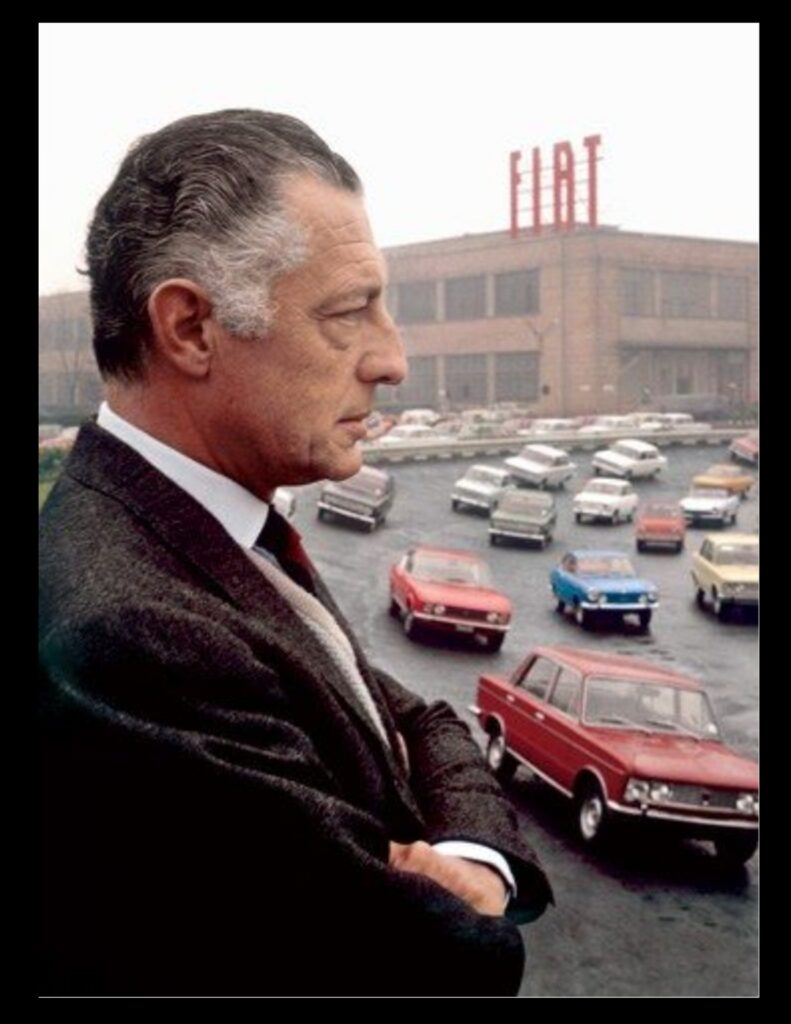
It wasn’t always like this at Fiat. Under the guise of the handsome Gianni Agnelli, Fiat stormed the sales charts and made cars that we all wanted to own. Like the 127. Not the greatest of small hatchbacks but a trend setter nonetheless. Th revolution of the hatchback started with Fiat. It was endearing to drive, easy to park and had mechanical simplicity that outstripped Citroën and their bucket of bolts 2CV for ease of maintenance.
Then there was the 128. A humdrum saloon that spawned the coupes and the X1/9. The 3 cars were chalk and cheese but we still wanted them all. The marmite Strada and its new style was fresh. The avant-garde looks eventually made way for a toned-down Strada model but here was Fiat with a new way of thinking.

Sadly for the Strada, the market had changed and despite Fiat’s reliance on computers and robots to design and build the things, it just wasn’t a market leader and in the end, we didn’t really go out and buy it.
Fiat it would seem had lost their way and would lose sales until the new Panda and Uno arrived. In case you are wondering, I am still in the ’80s. The Panda, more simple than the 127, was as revolutionary as the invention of the wheel until you drove it but its ability as a stylish and practical hatchback overlooked these problems.
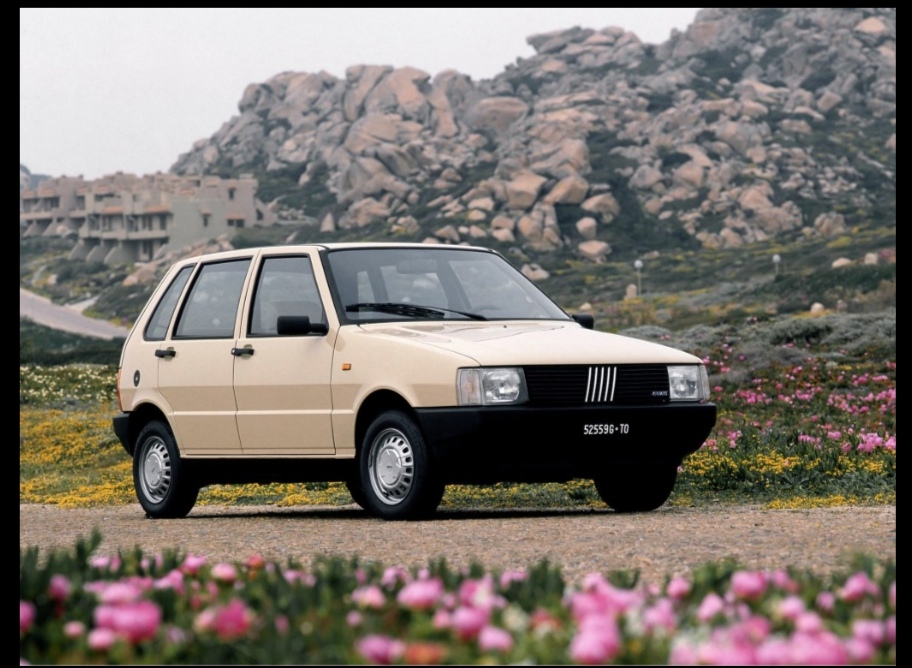
The same could not be said for the Uno. The car all of Europe wanted. It had everything you would require from a hatchback and more. For once this was a Fiat that you could put up for sale on a Friday afternoon and be taking cash from a punter on Saturday. Everyone wanted a Fiat Uno. They were as good to drive as to look at. There was not much wrong with an Uno.
This gave Fiat a bit of a boost in confidence. Sadly it wasn’t to last long because what came next flopped more than a soggy flannel. And that was before the corrosion set in. Something Fiat still struggled with. The Croma arrived and was instantly forgettable so we’ll skip that part for what came next. Fiat’s last swansong attempt at actually making a pretty decent car. The original Tipo of 88 and the Tempra.
In 1988 Tipo went on to win Car of the Year and rightly so. Fiat worked tirelessly on this car that was going to take sales from Ford and Volkswagen. It was galvanized in the steel areas and used composite plastics in other places so corrosion was going to be a thing of the past. Fiat’s had up to and beyond 1988 a horrendous or amazing (depending on your way of looking at it) ability to corrode.
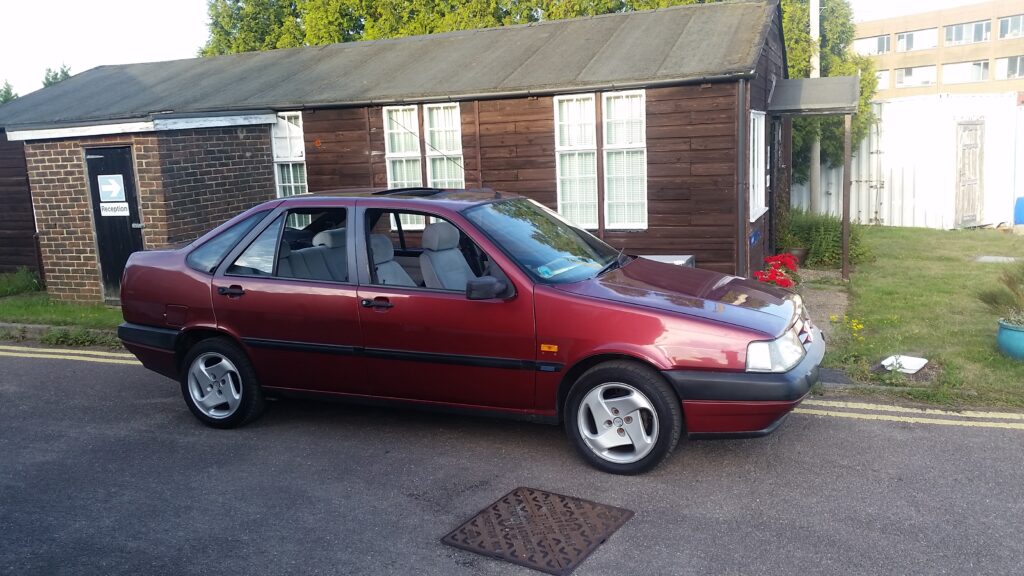
Not so with the Tipo and its sister car, the Tempra. Both cars gained favourable reviews in the press. Sadly I was just a child and unable to offer favourable review comments to these 2 cars but having got older and been able to enjoy the fruits of Fiat’s labour, I can tell you that the Turin people did the Italian people proud.
For a start the cars ‘thunked’ when you shut the doors. A sure-fire hit with the people who bought the VW Golf. People wanted ‘thunk’ and not ‘twang’ like that from the Citroën BX. Then there was the driving dynamics and handling. Now the lowly powered 1.4 was never going to be an engine you could exploit but buy into the 1.6 or 1.8 twin cam and you got something quite spectacular. Finally here was a car that you could release your inner mafia thug in.
And it all came together and worked. Tipo was seen as a popular car with its boxy body. That boxy was a beauty because it hid an ability to become quite the load-lugger and it stayed reasonable fresh-looking up until its replacement.
And that’s when it all went wrong. The Bravo and Brava. The 3 and 5 door hatchback replacements for Tipo and Tempra and you start to wonder what Fiat was doing or what they were looking at for inspiration because it wasn’t VW and it most certainly wasn’t much else. The whole market seemed to have moved on except say for the cheap Eastern Bloc cars and those cheap and cheerful imports from Korea because this is where Bravo/Brava was in terms of quality.

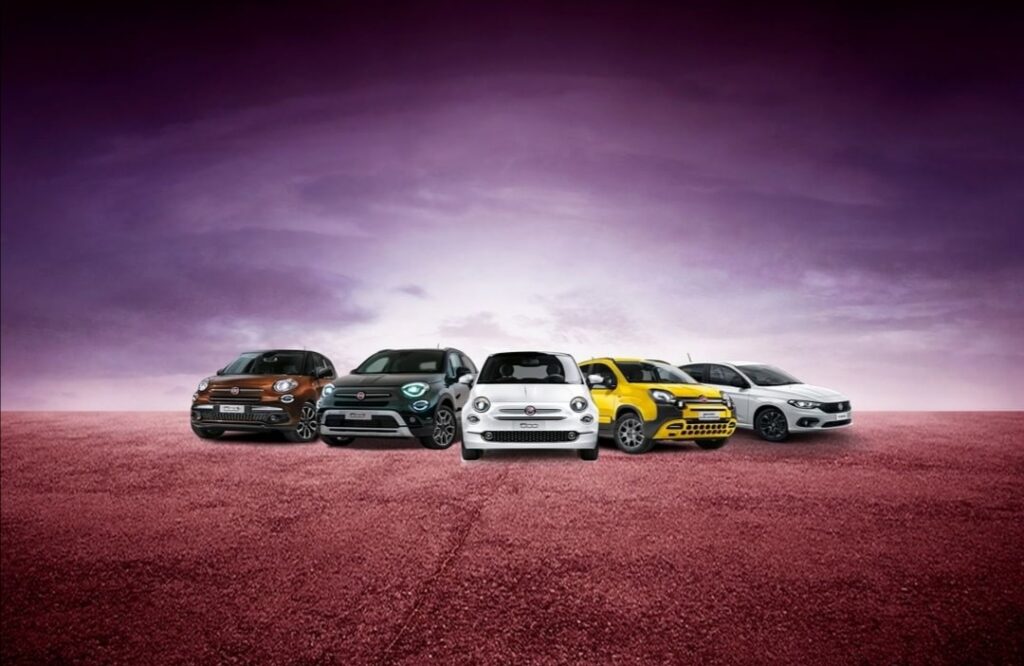
In some ways, they did manage to sell at first. The style of the Bravo with its 3 separate rear lights and dimensions were visually pleasing and so to was the Brava with its wild light bulb drenched rear clusters.
Sadly the build quality of old seemed to return and the BB’s would slide down the sales charts. Their replacements were even more way-off-the-mark and so woefully misjudged with what the motorist of the 2000’s wanted. Bloated looks from any angle and with no redeeming features to how they went that people laughed at them go by in a way that not even an Allegro 3 driver ever experienced. The Uno replacement, the Punto, did inject some legit “want” for Fiat into the buying public. At some point there was a Fiat on every street of the UK. And like Fiat of old, it’s upgrades just couldn’t keep up with the market. Those looks were once again made ‘safe’ and dulled the showroom appeal.
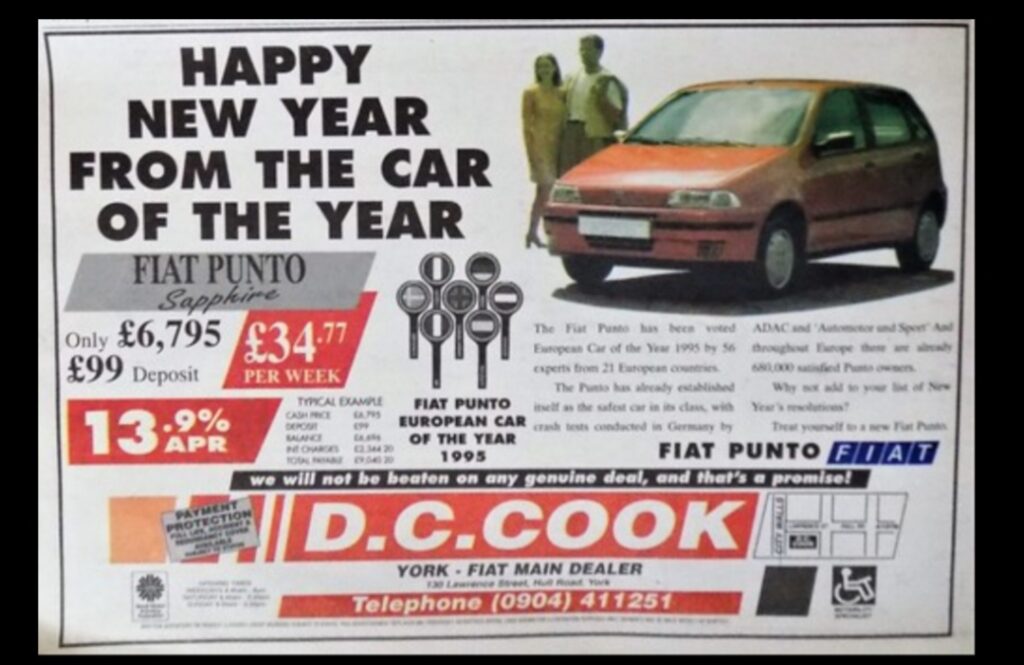
Fiat would soon navigate their way to dead ends in many of its market segments. Remember the Croma? Even though I mentioned it several paragraphs above, you probably still can’t remember it. Well it came back in a potatoes shaped estate and it wasn’t that bad but the name and the tarnished reputation of Fiat damaged it from drawing paper to the showroom. So that would be Fiat’s last entry into the large car sector.
It doesn’t get any better in 2022. If it wasn’t for the 500, a car that is 3 facelifts into a 15-year production run has somehow managed to keep Fiat relevant despite Fiat trying its luck with the 500L people carrier. It would seem as long as it’s small, Fiat does it very well but before this and 30 years ago it was much better for Fiat. Here we have Fiat’s that last longer than the perforation warranty that no one wants to buy. And why? Clamber aboard cars like Skoda and they make you feel like you have spent a million pounds on a car in the same way as a Land Rover. They make you feel like you have bought something of quality for the price. In the same way that Dacia make you appreciate the value product it is. Fiat are stuck in the middle and no one wants middle. The cars are too expensive and too cheap. Buyers have become savvy with their pounds.
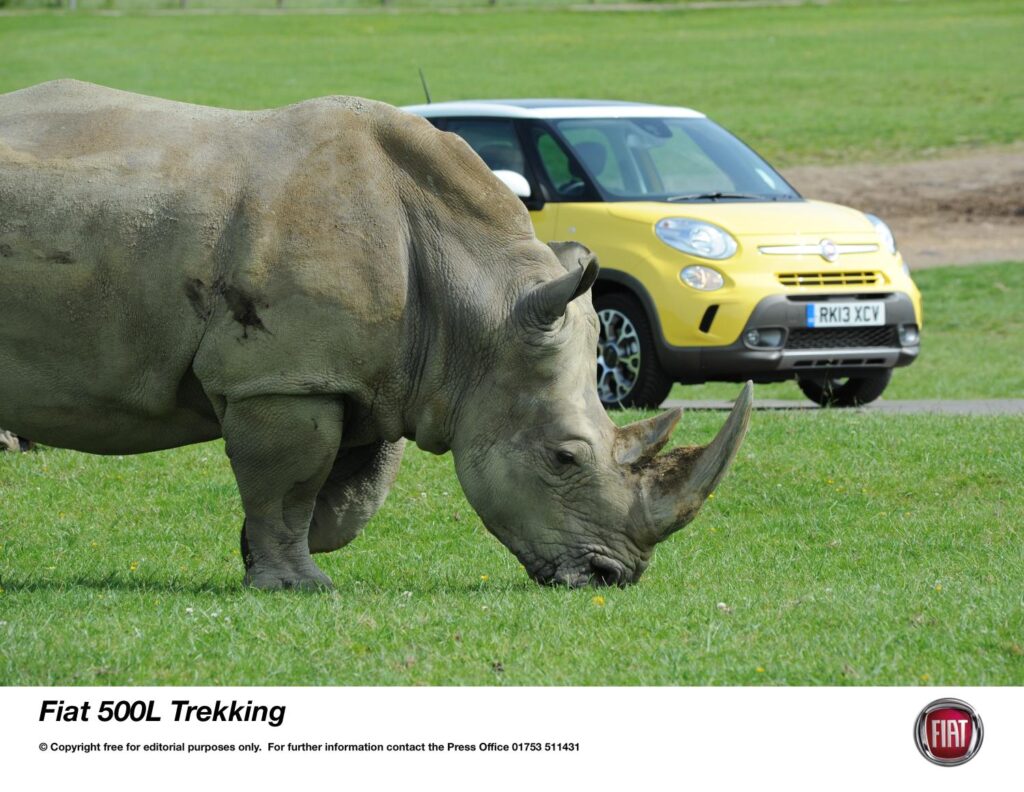
Fiat deserve to be on your shopping list when it comes to a new car. There is a passionate history that is deep rooted into the blood of many Italians. Cars built with passion and robots. Ask most Fiat owners of old and I’m sure they will regale you with a joyous story of their time behind the wheel of Turin’s finest. And then some stories when they weren’t so joyous. But like diamonds, you take the rough with the smooth. Then again I ask myself would I buy anything other than a 500 from Fiat and the answer is no so thankfully for Fiat, their product range is pretty much 500 or 500 or a 500. Or an Abarth.
We Fiat fans of old can only hope that greater things will come from the new Stellantis company of companies that house Citroën, Peugeot, Vauxhall and the Fiat family of many within the rather silly name. What is Stallantis anyway?
